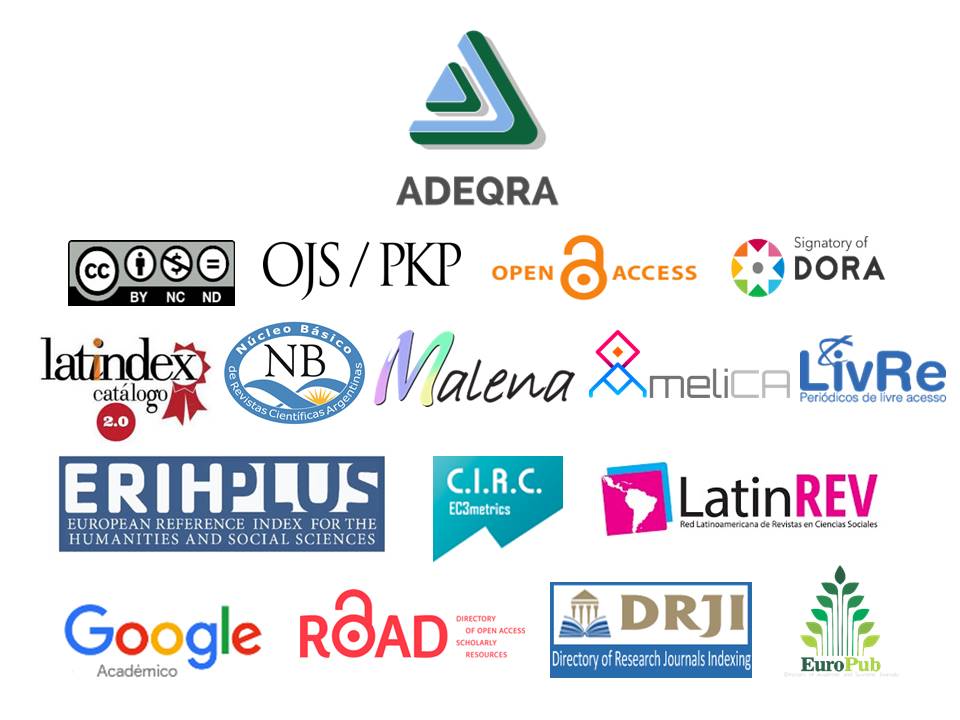Reasoning with molarity
Keywords:
molarity, conceptual understanding, reasoningAbstract
Within the framework of studies that compare the resolution of conceptual versus algorithmic problems, an instrument is presented for a conceptual approach to molar concentration, which focuses on reasoning on macroscopic properties of solutions The results, obtained from the survey carried out on 76 university students, show that they present greater difficulties in the case of the inverse proportionality between molarity and volume of dissolution, if a constant number of moles is considered. Interviews were conducted with 16 students, with the technique of thinking aloud. The answers (reasoning and strategies) were classified into four categories. An important finding of this research is that many students confuse number of moles with molarity, and use these concepts interchangeably. This instrument, which stimulates thinking, is motivating for both students and teachers and can be used in different teaching instances.
References
Bergquist, W. y Heikkinen, H. (1990). Student ideas regarding chemical equilibrium. Journal of Chemical Education, 67(12), 1000-1003.
Calik, M. (2005). A cross-age study of different perspectives in solution chemistry from junior to senior high school. International Journal of Science and Mathematics Education, 3(4), 671–696.
de Berg, K. (2012). A study of first-year chemistry students’ understanding of solution concentration at the tertiary level. Chemistry Education Research and Practice, 13, 8-16.
Dahsah, C. y Coll, R. (2008). Thai grade 10 and 11 students’ understanding of stoichiometry and related concepts. International Journal of Science and Mathematics Education, 6, 573-600.
Frazer, M y Servant, D. (1986). Aspects of stoichiometry-titration calculations. Education in Chemistry, 23(2), 54-56.
Gabel, D., Sherwood, R. y Enochs, L. (1984). Problem-solving skills of high school chemistry students. Journal of Research in Science Teaching, 21(2), 221-233.
Gabel, D. y Samuel, K. (1986). High school students’ ability to solve molarity problems and their analog counterparts. Journal of Research in Science Teaching, 23(2),165-176.
Gabel, D. y Bunce, D. (1994). Research on problem solving: chemistry. In Gabel D.L. (ed.), Handbook of Research on Science Teaching and Learning.New York: Macmillan, 301-326.
Johnstone, A.H. (1983). Chemical education research: Facts, findings, and consequences. Journal of Chemical Education, 60(11), 968-971.
Nurrenbern, S. y Pickering, M. (1987). Concept learning versus problem solving: is there a difference? Journal of Chemical Education, 64(6), 508-510.
Robinson, W. y Nurrenbern. S. (1990), Conceptual questions, consultada el 20 de marzo de 2018 en la URL: http://www.jce.divched.org/JCEDLib/QBank/collection/CQandChP/CQs/TypesOfCQs.html
Stavy, R. (1981).Teaching inverse functions via the concentrations of salt water solution. Archives de Psychologie, 49, 267-287.
Talanquer, V. (2006).Commonsense chemistry: a model for understanding students` alternative conceptions. Journal of Chemical Education, 83(5), 811-816.
Talanquer, V. (2011). Macro, submicro, and symbolic: The many faces of the chemistry “triplet”. International Journal of Science Education, 33(2), 179-195.
Vincent, A. (1981). Volumetric concepts - student difficulties. Education in Chemistry, 18(4), 114-115.
Downloads
Published
How to Cite
Issue
Section
License

This work is licensed under a Creative Commons Attribution-NonCommercial-NoDerivatives 4.0 International License.



